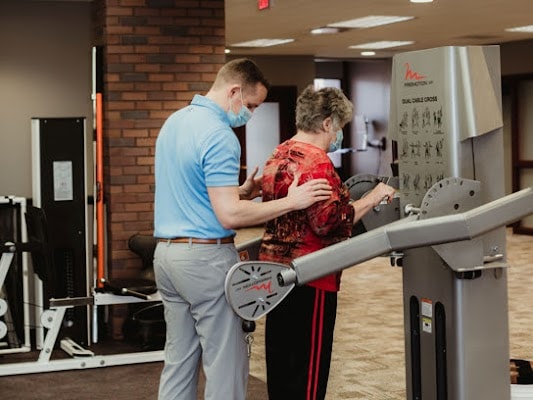Physical therapy can be a time-consuming process, but it is well worth the time. Physical therapy can help to relieve pain, increase range of motion, and hasten recovery from an injury or surgery. “How long does physical therapy take?” you may be wondering whether you’re new to it or have been doing it for a while.
Don’t be discouraged if you don’t see the results you want right away. Physical therapy isn’t a quick fix; it’s a long process that requires a lot of hard work. The length of treatment varies from person to person, and it is nearly impossible to predict how long it will take for an individual to fully recover.
In some cases, complete recovery may be impossible. You may never be able to return to your pre-injury level of performance. However, the goal of physical therapy is to help you achieve the maximum ability possible.
Factors Influencing Treatment Time Length
- The extent of the injury. A major injury usually necessitates more time in physical therapy than a minor injury.
- The body part that is affected. Some parts of the body heal faster than others. Muscles, for example, heal faster than tendons or ligaments.
- The amount of effort the patient exerts. Your physical therapist will guide you through your exercises and teach you what to do, but you must put in the effort. The more you try and the effort you put forth, the faster you will recover. But don’t go overboard. You may cause more harm than good if you attempt to do too much before you are ready.
- The patient’s healing rate. Everyone heals at their own pace. There is no mathematical formula for body healing. Even if you have similar injuries, the amount of time you spend in physical therapy may differ.
Average Healing Times for Various Tissue Types

Different types of tissue heal at different rates. The following is a breakdown of the average healing times for different tissues:
- Muscle: 2-4 weeks
- Tendon: 4-6 weeks
- Bone: 6-8 weeks
- Ligaments: 10-12 weeks
- Cartilage: up to 12 weeks
The key to healing is blood flow. Muscle heals the quickest of any tissue because it has a rich blood supply that provides nutrients and oxygen required for healing. Tendons and ligaments only have a limited blood supply, which causes them to heal more slowly. Physical therapy stimulates blood flow to quicken healing.
Cartilage lacks a blood supply, making it extremely slow to heal. Through movement, cartilage receives lubrication from fluid in the joints. This is one of the reasons why knee and hip physical therapy can be time-consuming. However, because movement promotes joint lubrication, it also explains why physical therapy can help to accelerate healing.
Load bearing is required for bone healing. Although bones are designed to support weight, a broken bone cannot support the same amount of weight as a healthy bone. Following a break, the bone should be immobilized for a period of time, but as healing progresses, applying weight to the bone can promote healing. Walking casts are useful for a broken leg, ankle, or foot bones for this reason.
HOW OFTEN WILL I NEED TO ATTEND?
The frequency with which you attend physiotherapy will be determined by the diagnosis as well as the severity of your injury or disorder. Your first appointment with your physiotherapist will include a discussion of your case, with the professional explaining your options. They will then determine a frequency that corresponds to your doctor’s prescription. Given the severity of your impairment, attending physiotherapy on a consistent basis will help you recover as quickly as possible.
You may be required to attend physiotherapy at least two to three times per week at first. Aside from frequency, each session can last between 30 and 60 minutes. While two to three visits per week may appear to be too much, especially if you have recently sustained an injury or had surgery, it is critical to understand why regular visits are required. The regular movement associated with physiatrist sessions promotes blood circulation, which helps in quick recovery. It also helps to make joints suppler and muscles condition faster. As your body heals and the physiotherapist observes how your body responds, your program will be adjusted accordingly. While the visits will be span out and reduced, the entire journey could take several months.
There are several steps you can take to help reduce the frequency with which you visit the medical clinic. You must complete all of the exercises and programs that the therapist assigns you. These programs may include stretching, ice therapy, and other specific movements in addition to the prescribed at-home treatment methods. It may also be suggested that you change some of your habits and set yourself up differently at work. Regular treatment attendance and following your therapist’s advice will result in quick rehabilitation, allowing you to return to activity sooner.
AFTER A SESSION, WHAT SHOULD I DO?
Even if you go to treatment, it will take time to manage the pain and return you to your previous state. The process is also linked to some soreness following physiotherapy sessions. Here are a few things you can do to relieve your pain.
- Ice the Area
Soreness is usually caused by inflamed tissue in the area of the body that is causing pain. Because inflammation is a normal part of the healing process, simply ice the affected area to cool and soothe it. Ice should be applied for 20 minutes at a time, repeating as needed.
Local inflammation that causes soreness may be caused by waste products that need to be eliminated. Drinking water after physiotherapy sessions will help your body process the toxins in your bloodstream.
- Do Your Exercises
Additional exercises performed following your physiatrist appointments will help to provide pain relief between treatments and reduce the need for ongoing treatment. Consult your physiotherapist about your home program to ensure that the activities will be beneficial to you.
- Follow the Expert’s Advice
Your physiotherapist will advise you on what to do after the sessions as they track your progress and monitor your gains. It is critical to follow your physiotherapist’s expert advice. When necessary, the professional may recommend ergonomic chairs, lumbar support, and rest to help your quick recovery.
CONTACT US
Without question, physical therapy has a lot of benefits. Contact Elite Health & Wellness in Kearney, NE, if you require physiotherapy treatment. We will be with you every step of the way as you work to regain your strength, function, movement, and overall well-being. To make an appointment, contact us right away.

